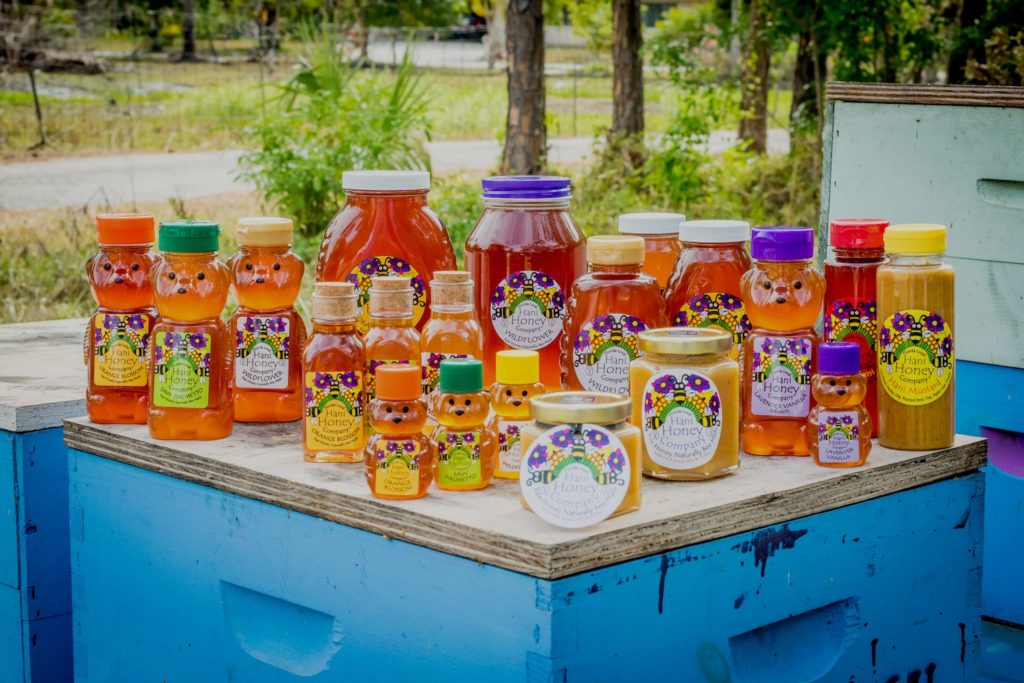
We love this question, seriously, and we get it a LOT! So many nice folks, who have had generations of family, friends, and historically used honey for health, and because it is ridiculously delicious, but also have been told time and time again, to make sure to use honey that is raw, unfiltered, and unprocessed, and especially LOCAL. What does that all mean for the consumer, and how local is local?
The really nice part of the answer is, there are amazing beekeepers with such wonderful honey readily available, just about anywhere. The premise behind consuming local honey is that the pollen and nectar collected and turned into honey by the bees are from plant sources near where you inhabit and if you suffer from allergies, there is anecdotal evidence that that Honey is supportive in preventing, reducing, or alleviating your allergies or symptoms. I have asked many about this subject and from a research standpoint, there is no evidence this is true. Mainly humans suffer from wind-borne pollens, and the majority of pollen honeybees collect pollen is from plants that reproduce or produce their fruit from the act of their visit and then visiting another flower, like in a plant that has both male and female flowers or a species that has male and female plants. That being said, I cannot tell you how many times a customer has told us that they are very certain that local honey was the reason they did not have bad allergies after adding just a spoon or 2 of that amazing sweet stuff to their daily regimen.
How local does it need to be?
Well, think about where you live. In my case, the plants that grow where I am are pretty common throughout the entire state and even into neighboring states. So I would consider any honey in our state and just beyond local enough. Also, I ask the beekeeper if they filter their honey, other than a coarse strainer to remove beeswax and debris so that the pollen is retained. And lastly, this one is important, heat. Honey is composed of complex sugars, nutrients, and enzymes. Honey’s health benefits are largely due to those and other volatile compounds from the plants the bees visit. The enzyme amylase is from the honeybee herself. When bees collect nectar, they hold it in an upper stomach called a “honey crop” until they return to their hive and deposit it in the comb or transfer it to a sister bee to make the deposit. That enzyme is mixed with the nectar and pollen, and beneficial bacterial (probiotics) are formed from the natural yeasts present, complex sugars, and the environment of the hive, making honey a live and extremely healthy food. Heat and time will reduce or destroy the enzymes and beneficial microbes, and increase HMF’s (hydroxymethylfurfural – don’t try to say that 3x fast). If honey is stored in hot temperatures, or heated, and HMF’s are created in the honey, and it is fed back to honeybees, they will perish. There is some research regarding HMF’s, in corn syrup, you can do your homework and decide for yourself. My goal is to educate both beekeepers and consumers about honey so we are all on the same page, and staying healthy.

So, in the end, there is a wide range of space around “local”. You can certainly enjoy “hyper-local”. I do! I actually love honey so much, I seek out as many varieties from as many beekeepers as I can. I am working to create a sensory understanding of them, and think it is really fun to experiment with them each in different ways. There are so many single and multi-floral source kinds of honey to try, some almost clear in color, others as dark as molasses. Some extremely sweet with a heady parfum fragrance, others not sweet at all and bitter. Honey can be used in just about any recipe you can imagine, or you can substitute honey for sugar. There are handy dandy conversion guides all over the internet. And, honey is amazing topically! For skin cleansing, moisturizing, toning, and to help with burns and infections! If you haven’t fallen for honey like I have, try a honey flight, by getting several small Jars of different kinds of honey, and tasting them side by side, taking a little time and a drink of water in between each one. While you’re at it, set out a nice plate of cheeses, fruit, and have a little snack. I promise you will remember.
Thanks to Jennifer Holmes of the Hani Honey Company for contributing this guest blog post! You can learn more about them as well as contact them on their My Honey Crate Listing.
The opinions expressed in this post are those of the authors. They do not necessarily reflect the opinions or views of My Honey Crate or its members.
